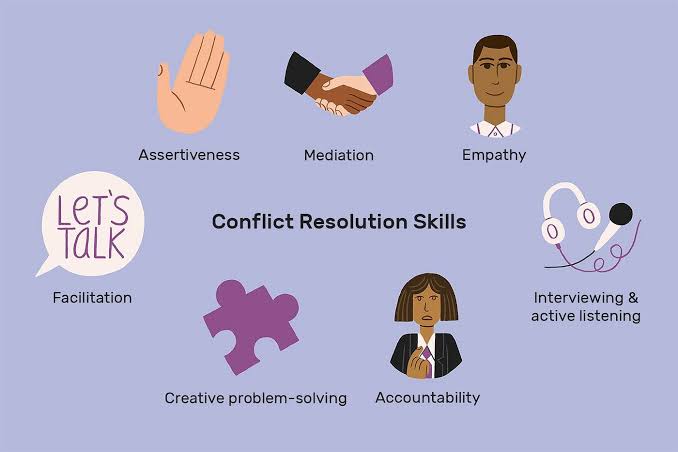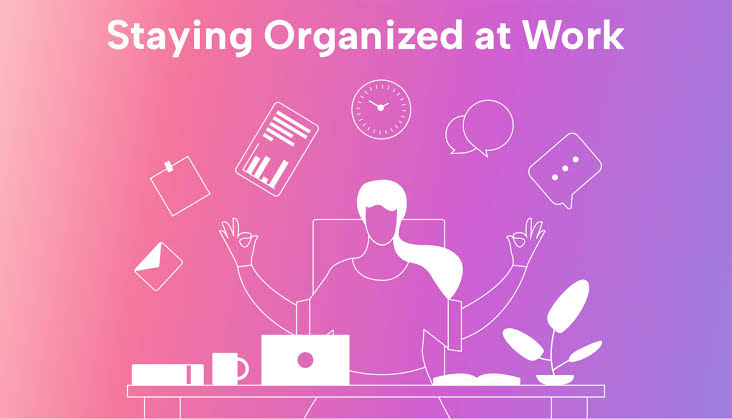Conflict is a natural and inevitable part of human interaction. Whether in the workplace, in relationships, or within communities, disagreements and misunderstandings can arise due to differences in personality, expectations, communication styles, or goals.
In 2025, with an increase in hybrid workplaces, multicultural teams, and fast-paced digital interactions, conflict is more common and sometimes more complex. However, conflict doesn’t always have to be destructive. If addressed properly, it can be a catalyst for growth, improved communication, and stronger relationships.
The key lies in understanding that conflict, when mismanaged, can create long-term damage. But when handled constructively, it offers valuable opportunities to build trust, develop empathy, and arrive at creative solutions.
Active Listening and Empathy
One of the most essential techniques in conflict resolution is active listening. In heated situations, people often focus on preparing their responses instead of truly hearing the other person. Active listening involves being fully present, acknowledging the speaker’s emotions, and confirming understanding without judgment.
In 2025, companies and institutions across Canada and beyond are now offering workshops that train employees to become better listeners. These programs emphasize eye contact, reflective feedback, and the use of open-ended questions.
Empathy plays a significant role in this process. Understanding another person’s perspective—especially if it’s different from your own—can shift the conversation from confrontation to collaboration. When individuals feel heard and understood, tensions tend to de-escalate naturally.
Staying Calm and Managing Emotions
Another crucial skill in conflict resolution is emotional self-regulation. Anger, frustration, or fear can quickly turn a simple disagreement into a hostile argument. Learning to stay calm under pressure helps prevent escalation and keeps the conversation productive.
Techniques such as deep breathing, pausing before responding, and using neutral language can help manage emotions. In high-stress environments, mindfulness training has gained popularity as a method to improve emotional resilience.
In 2025, several organizations integrate emotion-management tools into their leadership and HR training programs, recognizing that emotional intelligence is just as important as technical skills in resolving disputes effectively.
Using “I” Statements Instead of Accusations
How you express your feelings during a conflict can influence the direction of the conversation. One effective approach is to use “I” statements instead of accusatory “you” statements. For example, saying “I feel overwhelmed when deadlines aren’t met” is more constructive than saying “You never finish your work on time.”
“I” statements express personal feelings and needs without placing blame. This reduces defensiveness in the other person and opens up the possibility of a solution-focused dialogue.
This communication method is widely adopted in conflict resolution training, relationship counseling, and peer mediation settings because it promotes responsibility and emotional clarity.
Focusing on the Issue, Not the Person
When emotions run high, it’s easy to personalize the conflict. However, focusing on the issue rather than the person leads to more productive outcomes. This means avoiding character attacks or generalizations and instead identifying specific behaviors or situations that caused the problem.
By separating the problem from the individual, both parties are more likely to work collaboratively toward a solution. This technique is especially useful in team environments, where long-term collaboration is necessary and mutual respect must be preserved.
Managers and team leaders are now encouraged to frame conversations around shared goals rather than personal failures, helping to maintain professionalism even during difficult discussions.
Seeking Common Ground and Shared Goals
Conflict often arises from perceived differences, but most disagreements have at least some common ground. Identifying shared values, objectives, or experiences can help bridge the gap between opposing sides.
In workplace environments, this could mean focusing on project outcomes, company success, or customer satisfaction. In personal settings, it could be a mutual desire for harmony, trust, or respect.
Finding common ground doesn’t mean ignoring differences. It means using areas of agreement as a foundation for resolving the dispute. This shifts the conversation from adversarial to collaborative and encourages mutual problem-solving.
Collaborative Problem Solving
Once both parties have expressed their concerns and identified common goals, the next step is to find a solution that benefits everyone involved. This is known as collaborative or integrative problem-solving.
Rather than one side winning and the other losing, both parties work together to brainstorm options and reach a consensus. This often requires creativity, compromise, and patience—but it leads to stronger, more lasting outcomes.
In 2025, many Canadian organizations have embraced a collaborative model in their conflict resolution strategies. This includes team-based mediation, consensus-building exercises, and joint planning sessions.
Bringing in a Neutral Third Party
Sometimes, conflicts become too entrenched or emotionally charged to resolve internally. In such cases, involving a neutral third party, such as a mediator or HR professional, can help move the process forward.
Mediators do not take sides. Instead, they facilitate open communication, clarify misunderstandings, and guide both parties toward a mutually acceptable resolution. This process is widely used in both workplace and community settings.
Modern mediation services now include online options, making it easier for remote teams or cross-border groups to access help. In 2025, virtual conflict resolution platforms have gained popularity, especially in multinational organizations and academic institutions.
Creating and Upholding Clear Agreements
After a resolution is reached, it’s important to document or clarify what has been agreed upon. This helps prevent future misunderstandings and ensures that both parties are accountable for their commitments.
In professional settings, this may involve a written agreement, meeting summary, or updated workflow. In personal contexts, it could be a verbal understanding or a change in behavior that both parties commit to monitor.
Follow-up meetings or check-ins are helpful to evaluate progress and make adjustments if needed. Sustaining peace requires ongoing effort, not just a one-time solution.
Building a Culture of Respect and Open Communication
Long-term conflict prevention depends on the environment in which people work and interact. Organizations and families that promote open communication, transparency, and mutual respect are less likely to experience destructive conflicts.
In 2025, there is a strong emphasis on building emotionally intelligent cultures that support diversity, encourage dialogue, and recognize the value of different perspectives. This proactive approach reduces the likelihood of conflict and equips individuals to handle disputes more effectively when they do arise.
Leaders play a key role in setting this tone—modeling healthy conflict resolution behavior, encouraging feedback, and supporting psychological safety for everyone involved.
Conclusion: Turning Conflict Into Opportunity
Conflict is not something to be feared or avoided. When approached with the right mindset and tools, it can become a powerful opportunity for growth, learning, and stronger relationships.
Using techniques like active listening, emotional regulation, and collaborative problem-solving allows individuals to navigate difficult situations with grace and confidence. In a world where human interaction is constant and evolving, mastering conflict resolution is no longer optional—it’s essential.
As of July 2025, investing in conflict resolution skills is one of the smartest ways to build stronger teams, better communication, and more inclusive communities.




1pswkf
Good